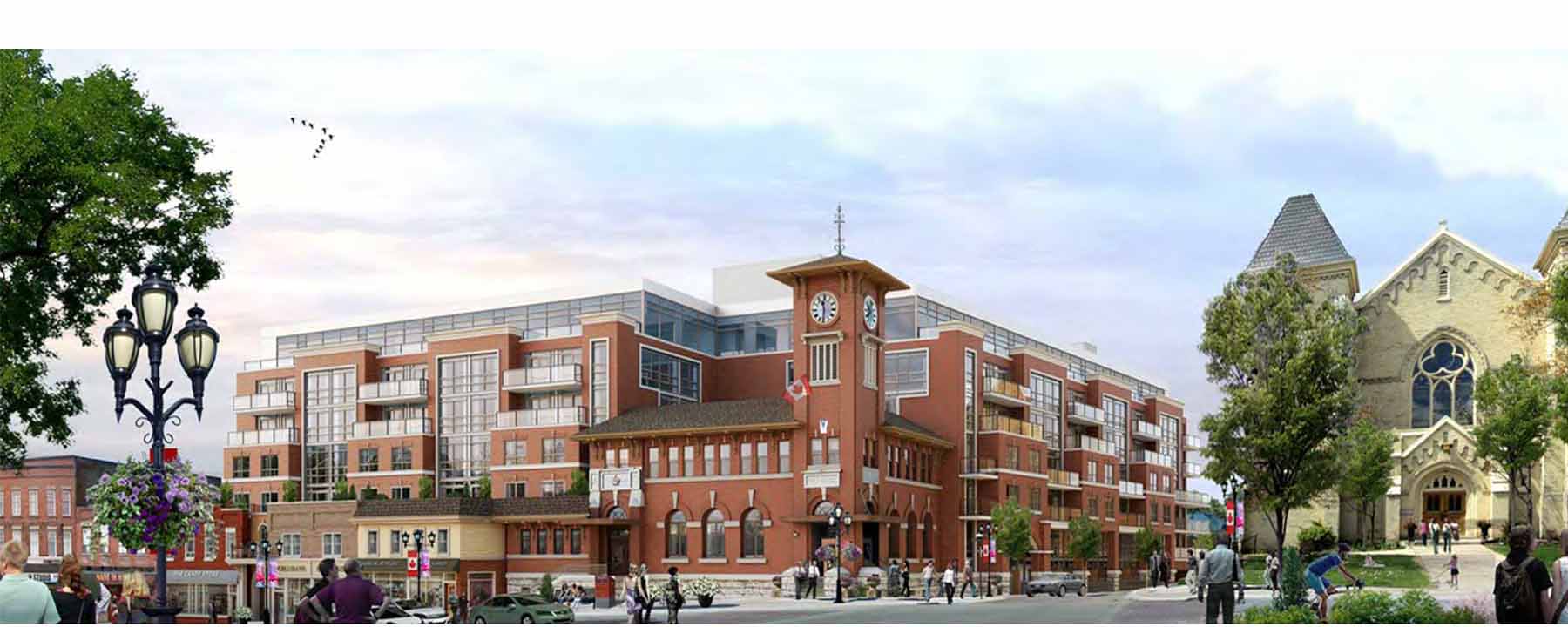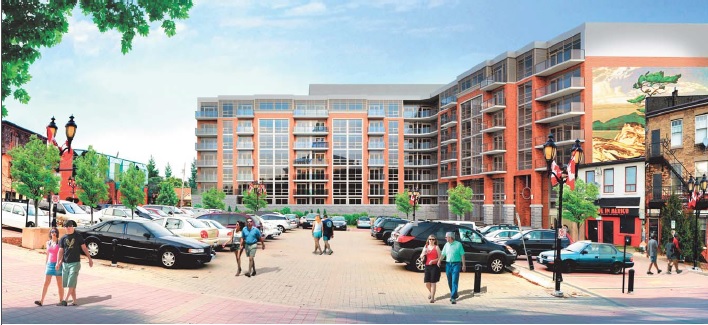Bob Forrest - the developer who wants to dump a seven storey condo into the heart of Newmarket's downtown Heritage Conservation District - has presented a single defining issue to the forthcoming OMB Appeal which has its second pre-hearing on 11 August 2017. 
Bob wants to know what amendments are "warranted" to the Heritage Conservation District Plan which would allow the construction of his Option B "and to achieve good heritage conservation planning".
I shall deconstruct this is a moment but, first, a little background.
Identifying the key issues
All the Parties to the Clock Tower OMB Appeal had until yesterday (7 July 2017) to hand over their "issues lists" to Bob Forrest's lawyer, Ira Kagan, who had to incorporate them all into a draft Procedural Order to be presented to the OMB and considered at the next pre-hearing on 11 August.
The OMB tells us the pre-hearing:
"identifies the issues, parties and participants; organises complicated matters; decides what documents should be exchanged and determines procedures before and during the hearing."
In contrast to Bob and his single issue, the Town of Newmarket has identified 21 issues worthy of consideration and Trinity United Church has come up with 12. The Heart of Newmarket Citizens' Group has heroically identified 42 issues with the Architectural Conservancy of Ontario (a putative Party) concentrating on its 17 core issues.
Spanner in the works
However, the Town of Newmarket has thrown a spanner in the procedural works by going to the Superior Court to enforce a land swap agreement it entered into in 2003 with Michael Bryan, a property owner on Main Street who subsequently sold his lands on to Bob. This has a direct bearing on the OMB Appeal. The case will be heard in Newmarket on 20 October 2017.
The Town's issue number 20 asks:
"Is any approval of the development, as proposed to be revised, premature pending a determination of legal ownership of portions of the subject land?"
It is difficult to imagine the OMB - which is an administrative tribunal - cocking a snook at the Superior Court. My guess is the OMB adjudicator will put things on hold until after the Court has pronounced. When I asked the OMB what its practice was in these circumstances I was told it was a matter for the pre-hearing.
We have a further complication. Bob has now withdrawn the original application and is going with his Option B which was unveiled for the first time on 3 May 2017 to the first OMB pre-hearing.

It is incomplete. There are no supporting studies that directly address Option B. This is what I told Bob's lawyer, Ira Kagan, when I emailed the ACO's issues list to him on Thursday 6 July:
As a layperson, it seems to me that Option B is not in a fit state to go before the Board. The Market Square elevation is unavailable and the supporting studies all relate to the original application which has now been abandoned. This puts me in a difficult position.
For some studies or parts of studies there will undoubtedly be a straight read-across from the original submission to Option B. But there are aspects of Option B where very significant revisions will be required. In some cases - I am thinking, for example, of the five level underground garage - new studies will be required.
Option B appears to rely - as did the original application - on easements from the Town. There is absolutely no indication from the Town that these will be forthcoming. Indeed, all the information I have points in the opposite direction. Mr Longo told us yesterday that
"the Town is not interested in having any of its lands utilized by the developer for that unwanted project." (ie the original application)
Insofar as your client views Option B as a variation of the original application there are no grounds for assuming the Town will consent for its lands to be used in any way to facilitate Option B when it has already denied the original application. To believe otherwise offends common sense.
In all the circumstances, I believe Option B should be withdrawn as it is manifestly incomplete and that your client should submit it, when complete, to the municipality where it can be given proper consideration.
What does Bob mean by "warranted"?
Now, I must return to Bob's single issue. Bob wants to know what amendments are "warranted" to the Town's Heritage Conservation District Plan to allow the construction of a seven storey apartment block with 143 rental units, 5 commercial retail units and 5 levels of underground parking containing spaces for 177 vehicles. It has a Floor Space Index of 4.19.
What does Bob mean by "warranted"? Does he mean amendments that can, in some way, be justified or is there a special legal meaning going beyond ordinary English usage?
Personally, I am quite happy with the Town's Heritage Conservation District Plan as it currently stands. There is a height cap of three storeys and an FSI of 1.0 which seems entirely appropriate for the area and nothing I see warrants a departure from the Plan.
Side-show to the main event
Others take a different view. When the Council rejected Bob's original application on 5 December 2016, John Taylor called on staff to bring forward a site specific Zoning By-law amendment to restrict the height of development fronting Main Street South and Park Avenue to three storeys but with the possibility of a fourth storey if set back by a minimum of 15 feet. Of course, no-one has been consulted about this yet. It may not be wanted. Anyway, this is a side show to the main event.
Bob wants to know how the Heritage Conservation District Plan can be changed to accommodate his inchoate Option B rather than the other way around.
Just to put the matter in this way is to underline the essential silliness of Bob's position.
Planning lawyers may see Bob's single issue in an entirely different light.
It may make perfect sense to them, if not to me.
This email address is being protected from spambots. You need JavaScript enabled to view it.
